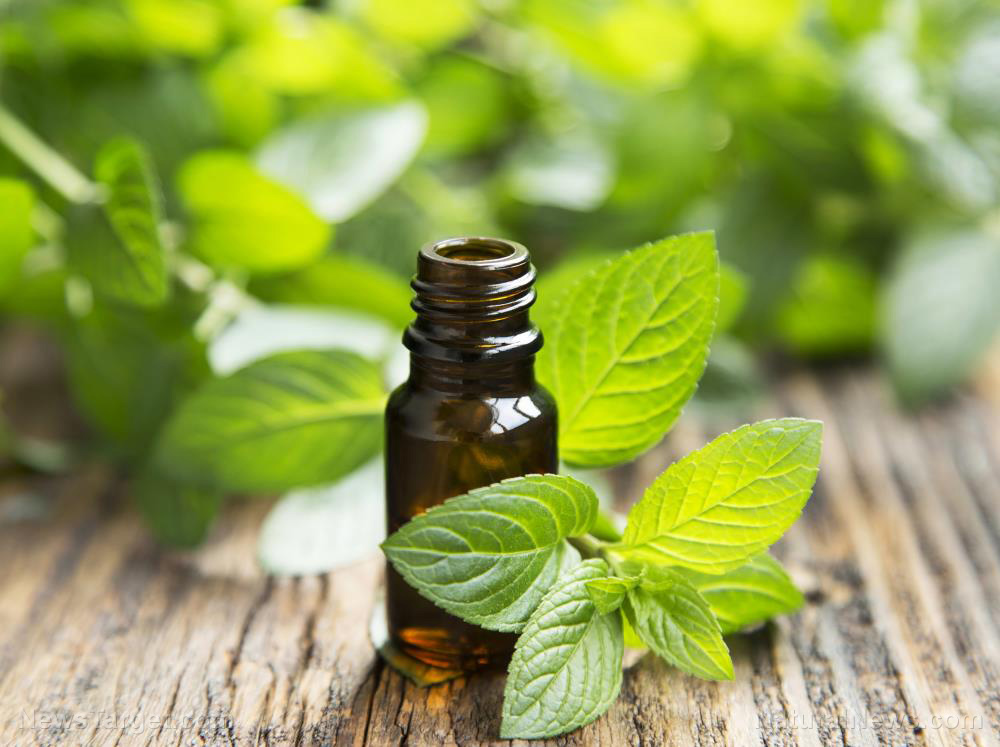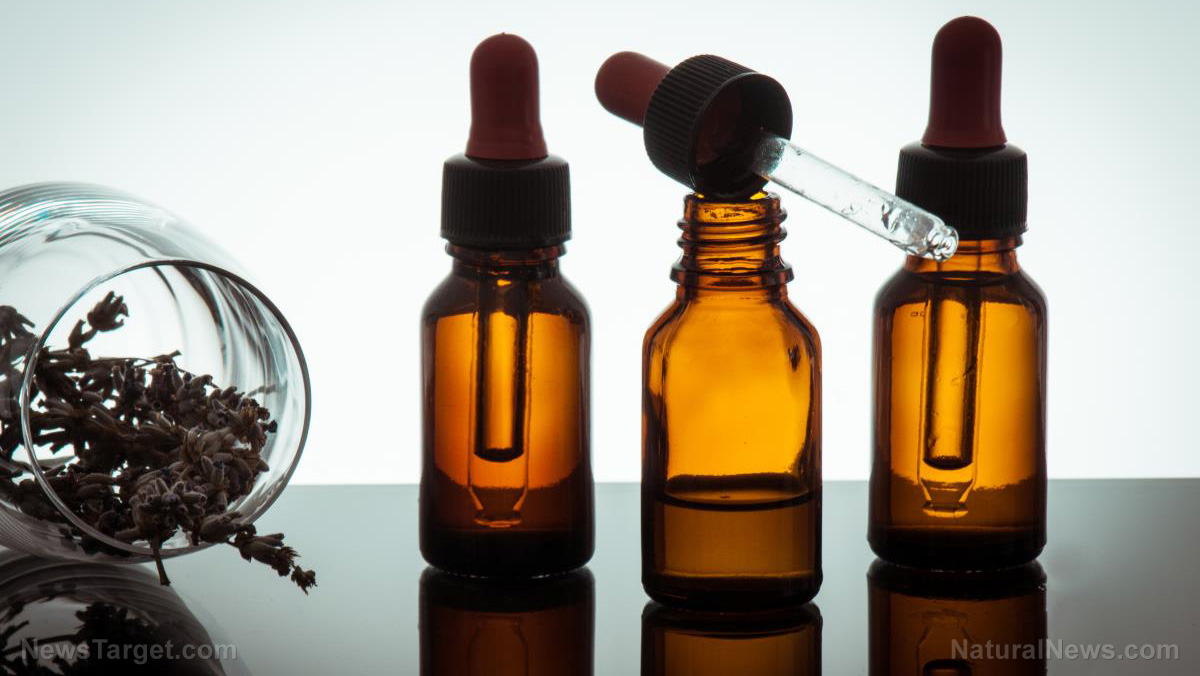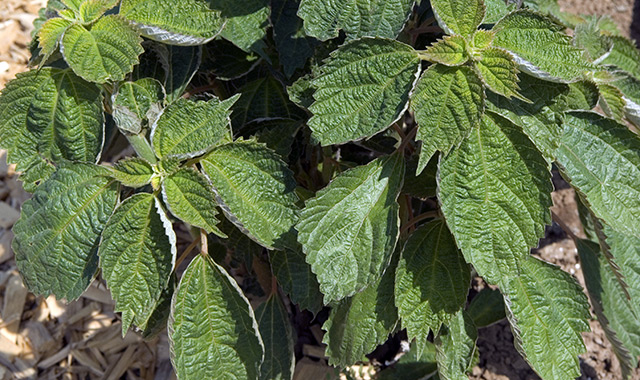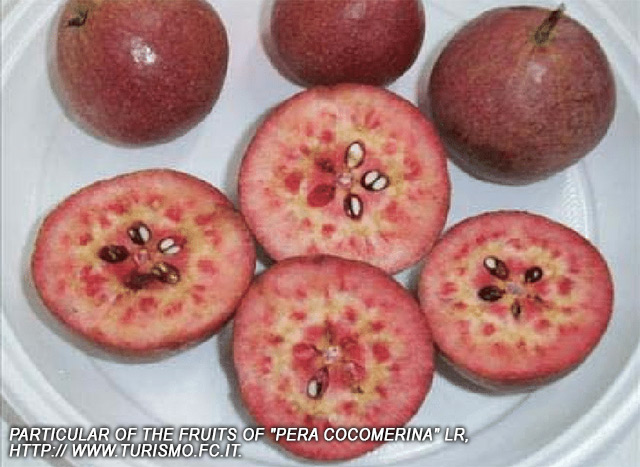10 ways peppermint oil improves your health
10/02/2018 / By Zoey Sky

Peppermint is a cross between water mint and spearmint. The herb has antimicrobial properties, and it has many medicinal uses. Various studies have confirmed the health benefits of peppermint and its essential oil.
Peppermint oil, which is also used as a flavoring agent, contains minerals and nutrients like calcium, copper, folate, iron, magnesium, manganese, omega-3 fatty acids, potassium, and vitamins A and C.
Menthol, its main component, can help treat bad breath, headaches, and rashes. The menthol in peppermint also has powerful anti-inflammatory, antispasmodic, and painkilling effects.
Below are some peppermint oil uses that you can try for yourself. (h/t to Blogs.PaleoHacks.com.)
- Breath freshener – Peppermint is often used in toothpaste and mouthwash because of its scent and powerful antibacterial properties. Make your own breath spray by adding several drops of peppermint oil to a spray bottle with about a cup of water. Use the breath spray as needed.
- Bug repellent – Peppermint oil has a volatile compound that overwhelms insects like mosquitoes, making it the perfect ingredient for a bug repellent. Make peppermint oil bug repellent by adding several drops to a carrier oil and rubbing the mixture all over exposed areas of your body. To repel bugs inside your home, add peppermint oil to your floor cleaner.
- Curb cravings – If you’re trying to lose weight, use peppermint oil to curb your cravings. The oil can help reduce your appetite and make you feel full faster. Use a diffuser with several drops of peppermint oil during meals. Alternatively, you can dilute peppermint oil with a carrier oil (e.g., olive oil), then rub it on your chest.
- Dandruff treatment – Peppermint oil has anti-fungal and antimicrobial properties, which makes it perfect for treating dandruff. If you have dandruff, add two drops of peppermint oil to your regular shampoo, then massage the mixture onto your scalp as you shower.
- Joint pain relief – The menthol in peppermint oil can help ease joint pain due to its anti-inflammatory and painkilling effects. Make some ointment for joint pain by adding two drops of peppermint oil to a small dollop of olive or coconut oil. Mix the ingredients in your hands, then rub it on sore joints.
- Manage allergies – Peppermint oil can be used to manage allergy symptoms like coughing because it can help expel mucus and phlegm. Add the oil to a diffuser along with eucalyptus to reduce your allergy symptoms.
- Muscle pain relief – Studies have determined that menthol can help reduce muscle soreness, minimize inflammation, and raise your pain threshold. Make a soothing ointment by combining 1/4 cup of coconut oil with five drops of peppermint oil. Apply the ointment on sore muscles.
- Promote hair growth – Massaging peppermint oil into your scalp can help promote hair growth and encourage hair to become fuller and thicker. If you want healthier hair, add several drops of peppermint oil to your shampoo and massage into your scalp. (Related: The best essential oils for healthier hair.)
- Relieve headaches – Research has proven that peppermint oil can help reduce the pain caused by headaches. If you have a headache, combine two drops of peppermint oil with a carrier oil and rub the mixture on your temples. If the headache feels more like a tension headache, which starts from the neck area, massage the oil on your shoulders and neck instead.
- Soothe rashes and/or itching – According to studies, peppermint oil has cooling and anti-inflammatory properties that can soother minor itches caused by bug bites or poison ivy. Dilute two drops of peppermint oil in olive oil and rub on the affected area.
Keep a vial of peppermint oil in your kitchen so you always have access to a versatile ingredient that can be used for homemade remedies.
You can read more articles about the benefits of peppermint oil at EssentialOils.news.
Sources include:
Tagged Under: botanicals, essential oils, health benefits, herbal medicine, herbal remedies, natural cures, natural healing, natural health, natural medicine, natural remedies, peppermint, Peppermint Oil, prevention, remedies


















